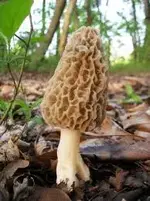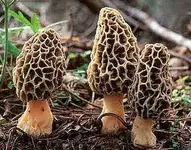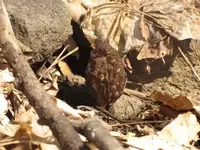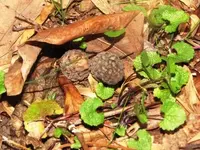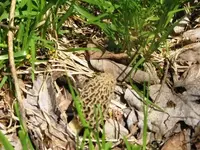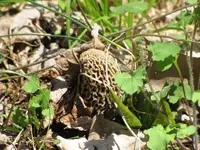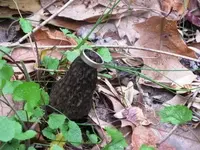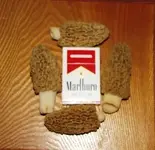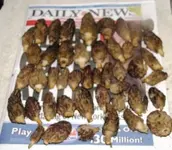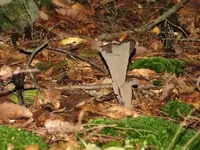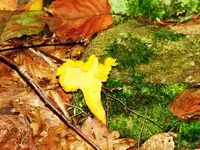Truffles are found in the Northeastern states. In fact, they are found throughout the U.S.
Tell me the state you live in, and I will give you probable or known species in your area.
Here in Oregon, Morchella esculenta is almost always associated with old-growth Black cottonwood, a kind of poplar.
The Burn-site morel, or Morchella angusticeps, if frequently the first sign of life found after devastating disasters. For example, it was the first sign of life found within a week after Mt. St. Helens erupted 35 miles NE of me in 1980. (A certain irony there, since I live at the base of Mt. Tabor, the only dormant volcano within a major metropolitan area.)
The first morels I find are usually in February, as they are also found in the coastal areas of California in sandy conditions. My earliest find was the first week of February between Lewis & Clark State Park and the Columbia River, under cottonwood, growing on accumulated composted cottonwood leaves, elevation perhaps 40 feet. But I have found what appears to be the same species growing at 2800 feet elevation near Bear Springs Ranger Station on Mount Hood. This is a tiny species, rarely maturing to over 3 inches total height, and usually fruits before other morels by at least 2 weeks.
Both the tallest and among the lightest morels I have ever seen were at a mushroom buyer's station along the Zigzag River. A picker brought in several specimens 17- to 24-inches tall. Yet nothing weighed over 2 ounces!
Similarly, I have found a caespitose clump of Morchella crassipes (Bigfoot morel) weighing over 2 pounds, but including a mere 8 specimens.
I'm not sure that M. elata, M. crassipes, M. esculenta, M. rubritincta, and other species are distinct, separate species. But they do appear to show separate growth characteristics and preferences. Paul Stamets found the type-specimen for his Morchella culture growing on a bale of wheat straw left in a wheat field in central Washington. There is also a distinctive (and distinctively edible) species apparently mycorrhizal with older Quercus garryana, or Oregon White oak.
In Depoe Bay, in Lincoln County, Oregon, it has been reported that Morchella angusticeps were found fruiting on the remains of a cardboard box which once held that same kind of mushroom! Apparently cardboard can be one substrate for cultivating this species.
According to David Arora, the mushroom season in California is much different than most other locales in the United States. He told me he frequently finds morels as well as the majority of other fungi fruiting in January-March in the San Francisco Bay area.
Many of the morels found in Eastern U.S. appear to have at least some mycorrhizal referent: tulip poplars and old apple trees are often cited, as well as older elm. Elm is an extremely rare tree in Oregon, and often is infected with Dutch Elm disease, at least in Portland. Some magnificent elms still remain in the downtown park blocks between 8th and 9th street in SW Portland, only a few blocks from where I worked for many years.

